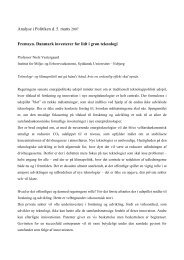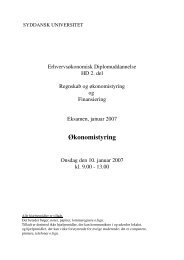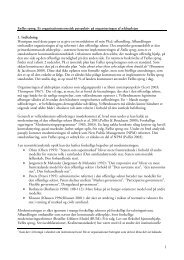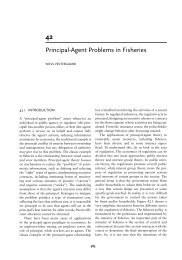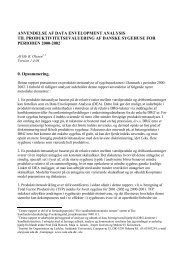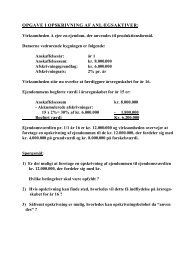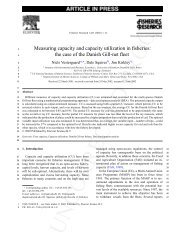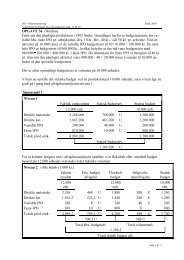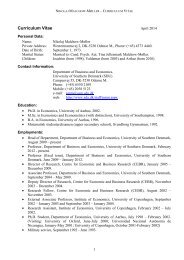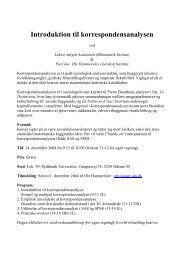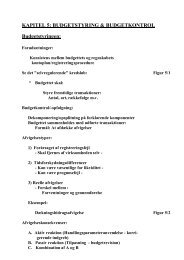purposes, are channels for “expressions”, fulfill specific roles <strong>and</strong> solve specific tasks <strong>in</strong> relation tothe political system.Studies <strong>of</strong> political parties lay focus on size, ideological characteristics, social l<strong>in</strong>ks, membership,organisation <strong>and</strong> leadership, that means the problems related to party <strong>in</strong>stitutionalisation. As far asparty systems are concerned emphasis has been laid on the number <strong>of</strong> parties, i.e. the party systemformat, the structure <strong>of</strong> the ideological spectrum, types <strong>of</strong> polarisation <strong>and</strong> the characteristics <strong>of</strong>voter support 2 . In the post-communist context, besides the dist<strong>in</strong>ctions known from studies <strong>of</strong>political parties <strong>in</strong> West-Europe, i.e. between mass parties, cadre parties, catch-all parties, cartelparties, dist<strong>in</strong>ctions between programmatic parties, clientelistic parties <strong>and</strong> charismatic led parties,seem fruitful (Fiala etc, 2003:191).Thus party systems constitute one <strong>of</strong> the political systems most important subsystems based on<strong>in</strong>teraction between parties. Functional party systems are characterized by competition <strong>and</strong> at thesame time a will<strong>in</strong>gness to enter political compromises between the parties <strong>in</strong>volved. As Sartori putit, a “party system is precisely the system <strong>of</strong> <strong>in</strong>teractions result<strong>in</strong>g from <strong>in</strong>terparty competition”;therefore party systems consist <strong>of</strong> “patterned <strong>in</strong>teractions <strong>of</strong> its component parts, thereby imply<strong>in</strong>gthat such <strong>in</strong>teractions provide the boundaries, or at least the boundedness, <strong>of</strong> the system” (Sartori,1976:43-44). Look<strong>in</strong>g at the way parties connect society <strong>and</strong> government, three party systemfunctions can be observed. Basically the party system can aggregate social cleavages, translatesocial cleavages <strong>in</strong>to political cleavages, or block the politicization <strong>of</strong> social clavages. As noted byMatthis Bogaards the one-party state seem to maximize block<strong>in</strong>g; the two party state seems to bebest <strong>in</strong> achiev<strong>in</strong>g aggregation; <strong>and</strong> the multiparty system most suited to translation (Mungiu-Pippidi, Krastev, 2004:250).In addition, Sartori dist<strong>in</strong>guishes between the classical two-party systems like <strong>in</strong> Brita<strong>in</strong> <strong>and</strong> US,moderate plural systems characterized by limited fragmentation <strong>and</strong> moderate centrpetalcompetition, party systems characterized by polarized pluralism, highly fragmentated <strong>and</strong>ideologically polarised party systems, <strong>and</strong> f<strong>in</strong>ally the “predom<strong>in</strong>ant” party systems, <strong>in</strong> which caseone party is <strong>in</strong> the position <strong>of</strong> a majority <strong>in</strong> parliament long time. The crucial factor is the way theparties <strong>in</strong>teract, like “work<strong>in</strong>g multi-party systems”, “non-work<strong>in</strong>g multiparty systems” or“immobilist” multiparty systems.The system concept is mean<strong>in</strong>gless unless the system has characteristics that go beyond thecomponent parts, i.e. beyond a seperate consideration <strong>of</strong> its component elements. In other words,the parties are functions <strong>of</strong> the <strong>in</strong>teraction with other parties <strong>and</strong> to a great extent react <strong>and</strong> act <strong>in</strong> acompetitive <strong>in</strong>terplay with other parties. In case the <strong>in</strong>teraction does not take place or fails party nonsystems or weak party systems (Almond <strong>and</strong> Powell, 1996:237) may emerge. In those casesconflicts (<strong>and</strong> <strong>in</strong>teractions) <strong>in</strong>side the parties become stronger than between the parties. In addition,party systems might be high or low polarised, depend<strong>in</strong>g on the <strong>in</strong>tensity <strong>of</strong> polarisation, <strong>and</strong> theymay be fragmented or segmented <strong>in</strong> case <strong>of</strong> multipartiism <strong>and</strong> long ideological distance between theparties.Strong polarisation may tend to generate adversary politics, <strong>in</strong> which case the relations between thebigger parties are characterized by confrontation. In those cases the political life is marked by apermanent election campaign. New great utopia’s were rejected, even the Prague Spr<strong>in</strong>g <strong>in</strong>Czechoslovakia, as the new elites preferred the already tested like the market economies <strong>and</strong> liberal2 See e.g. Jean Blondel, “Types <strong>of</strong> <strong>Party</strong> System”, <strong>in</strong> Mair, 1990:302.8
democracies known <strong>in</strong> the West. The political debate has been polemic <strong>and</strong> personal, nonethelsessantisystem parties i general did not well at the elections. Thus parties which aimed at destroy<strong>in</strong>g thenew postcommunist system did not necessarily have a great electoral support. Adversary politics onthe actor level sometimes took place between parties ideologically <strong>and</strong> programmatically close toeach other.In the later stage <strong>of</strong> post-communism, mov<strong>in</strong>g from extraord<strong>in</strong>ary to more ord<strong>in</strong>ary politics, parties<strong>and</strong> party systems can to a great extent be studied by us<strong>in</strong>g concepts <strong>and</strong> cognitive <strong>in</strong>strumentsknown from studies <strong>of</strong> the more well <strong>in</strong>stitutionalised parties <strong>and</strong> party systems <strong>in</strong> the West, e.g. by<strong>in</strong>clud<strong>in</strong>g the well known dist<strong>in</strong>ctions between types <strong>of</strong> political parties <strong>and</strong> party systems, putforward by Duverger, Sartori, Kirchheimer, Mair etc., e.g. as mass parties, catch-all parties <strong>and</strong>cartel parties, the different types <strong>and</strong> forms <strong>of</strong> polarization <strong>and</strong> changes over time <strong>of</strong> the partysystem format.1.3. The formation <strong>of</strong> political partiesAs noted above, can political parties be considered as a necessary, but not as a sufficient conditionfor consolidation <strong>of</strong> democracy. That argument can also be used as regards the Central Europeancountries. Most <strong>of</strong> the new political parties <strong>in</strong> the CEEC’s were established top-down, suppliedfrom above more than dem<strong>and</strong>ed from below <strong>and</strong> established almost over night as ”s<strong>of</strong>a-parties <strong>and</strong>mostly by <strong>in</strong>tellectuals. Some parties - like historic parties - were ”re-<strong>in</strong>vented” or “reborn”. Somewere post-communist, wehich aimed to f<strong>in</strong>d a new post-communist identity, some were authentichistorical parties, e.g. social democratic <strong>and</strong> agrarian parties, other new parties were anticommunistcatch-all movement-parties, i.e. negative alliances appeal<strong>in</strong>g to all anti-communist m<strong>in</strong>ded sections<strong>of</strong> society.<strong>Parties</strong> <strong>and</strong> politicians, pretend<strong>in</strong>g to be “above politics”, were successful at the first elections butmostly due to the wide spread resistance aga<strong>in</strong>st party politics. In the first phase the prevail<strong>in</strong>gpolitical culture was not favourable for the development <strong>of</strong> functional <strong>and</strong> st<strong>and</strong>ard type politicalparties <strong>and</strong> party federations <strong>and</strong> the emergence <strong>of</strong> pr<strong>of</strong>essional <strong>and</strong> responsive politicians.Characteristics from the former system such as extrication, total articulation, output-articulation,anti-politics, overparliamentarization <strong>and</strong> adversary politics turned out to be be impossible toelim<strong>in</strong>ate over night.Furthermore, several country specific features have been observed. Some have mostly been due tostructural factors, <strong>in</strong>clud<strong>in</strong>g the legacy <strong>of</strong> the past, some to the country specific circumstances at thetime <strong>of</strong> the demise <strong>of</strong> the old systems <strong>and</strong> some to the chosen strategies for transformation, i.e. thesubjective factors. Like <strong>in</strong> Western countries studies <strong>of</strong> the <strong>in</strong>ternal party dynamics has been ratherlimited <strong>and</strong> difficult to carry through 3 .As noted above the development <strong>of</strong> political parties <strong>and</strong> party systems <strong>in</strong> the CEECs has beenclosely connected with the questions about consolidation <strong>of</strong> democracy <strong>and</strong> can therefore beexpla<strong>in</strong>ed on the same levels, i.e. the actor, structural, <strong>in</strong>stitutional <strong>and</strong> policy-programmatic.Country wide democratic polities cannot be susta<strong>in</strong>ed without the organiz<strong>in</strong>g <strong>and</strong> mediat<strong>in</strong>g role <strong>of</strong>political parties. <strong>Parties</strong> re<strong>in</strong>force identification with the democratic process by tak<strong>in</strong>g account <strong>of</strong>,aggregat<strong>in</strong>g the different <strong>in</strong>terests <strong>in</strong> society <strong>and</strong> counteract<strong>in</strong>g an excessive particularism (Brown,ed.:211, 213). Actor type explanations have been prom<strong>in</strong>ent <strong>in</strong> case <strong>of</strong> transitions by emphasiz<strong>in</strong>g3 More about that subject, see Szczerbiak, 2001:94.9
- Page 3: “This provisional situation chara
- Page 6 and 7: marketisation and privatisationshor
- Page 10 and 11: the significance of strategic choic
- Page 12 and 13: presidentialism gave rise to “flo
- Page 14 and 15: antipolitics and reinforcement of a
- Page 16 and 17: In the late 1990’s elections most
- Page 18 and 19: determined primarily by “politica
- Page 20 and 21: politics and antipolitics, all sign
- Page 22 and 23: which attitudes to state regulation
- Page 24 and 25: Anti-communism has been defined in
- Page 26 and 27: elections and the Slovak communists
- Page 28 and 29: Cartel agreementsbetter representat
- Page 30 and 31: Basically the absence of clear cons
- Page 32 and 33: After 1989 different types of polit
- Page 34 and 35: complex project for transition unde
- Page 36 and 37: window of opportunity in spite of s
- Page 38 and 39: analyses of party institutionalizat
- Page 40 and 41: political messages and slogans. Thu
- Page 42 and 43: well established party culture may
- Page 44 and 45: expected, much due to the many spli
- Page 46 and 47: Furthermore, the polarisation on el
- Page 48 and 49: Finally, Solidarity can also be con
- Page 50 and 51: whole, on the one side an authorita
- Page 52 and 53: The economic recession and the grav
- Page 54 and 55: election defeat more cooperation an
- Page 56 and 57: The formation of AWS can be conside
- Page 58 and 59:
group. RS AWS constituted the Chris
- Page 60 and 61:
According to the original plans the
- Page 62 and 63:
values. According to Rybicki, as so
- Page 64 and 65:
AWS should fight against all types
- Page 66 and 67:
2001 parliamentary election, howeve
- Page 68 and 69:
and workers voted ZChN. At the 1993
- Page 70 and 71:
The League has been considered as a
- Page 72 and 73:
establishment like than LPR’s. Th
- Page 74 and 75:
jobs in rural areas, especially sma
- Page 76 and 77:
industrial policy. According to the
- Page 78 and 79:
pressurizing the government to give
- Page 80 and 81:
democrats, thereby locating itself
- Page 82 and 83:
To conclude, the Freedom Union (UW)
- Page 84 and 85:
Polish middle class. Thus, in Janua
- Page 86 and 87:
such as KSCM and KSS in The Czech R
- Page 88 and 89:
The SLD leaders were mainly recruit
- Page 90 and 91:
the falling popular support for pri
- Page 92 and 93:
innovation was formation of the pol
- Page 94 and 95:
place after talks with each applica
- Page 96 and 97:
Has the Left any freedom of manoeuv
- Page 98 and 99:
medicine, changes in the labour cod
- Page 100 and 101:
The Labour Union (UP), Democratic U
- Page 102:
Nevertheless, before that had taken



